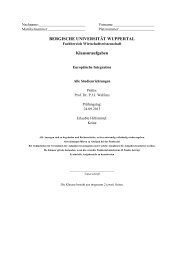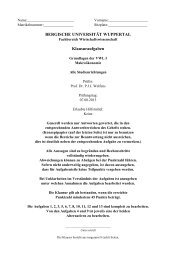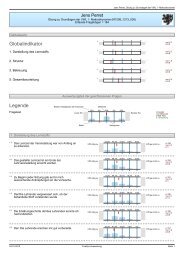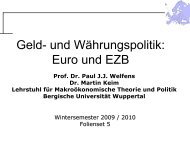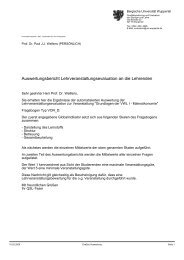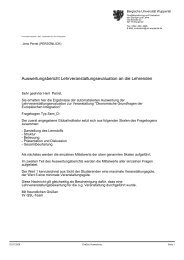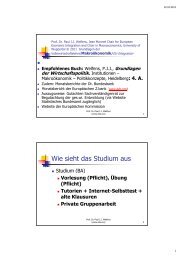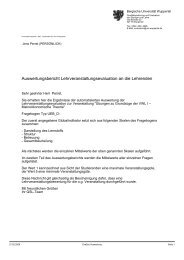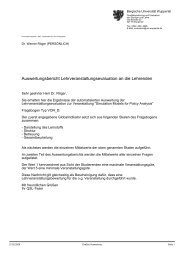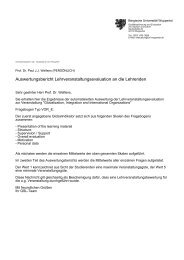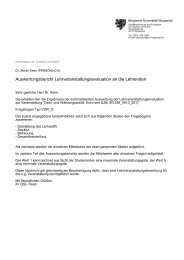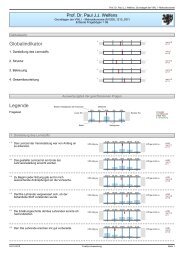UNIVERSITÄT POTSDAM - Prof. Dr. Paul JJ Welfens
UNIVERSITÄT POTSDAM - Prof. Dr. Paul JJ Welfens
UNIVERSITÄT POTSDAM - Prof. Dr. Paul JJ Welfens
Create successful ePaper yourself
Turn your PDF publications into a flip-book with our unique Google optimized e-Paper software.
is also included which means that three-fourths of Euroland is covered. Comparing<br />
Euroland with the US on the basis of this limited sample is also inadequate since the<br />
comparable basis would be roughly California plus Washington, New York, Michigan,<br />
Illinois, Massachusetts and Florida.<br />
The ECB’s first statement, namely that in the period 1990-2000 GDP per hour<br />
worked in the euro area and the US was roughly equal, namely 1.8% and 1.7%, is misleading<br />
since the US unemployment rate has reduced whereas it has increased in the<br />
euro area; a methodologically correct analysis would calculate a hypothetical “comparable<br />
employment labor productivity growth” (CELPG) – that is with a lower unemployment<br />
rate / a higher employment rate in the euro zone whose development would<br />
match that of the US; the CELPG rate would on theoretical grounds certainly be lower<br />
than 1.8% for Euroland. The ECB’s second main statement is based on the comparison<br />
of the US with Germany plus France, Italy, and Finland which is doubtful per se and<br />
even more so when the main conclusion is derived: “This suggests that also in the<br />
United States there is little evidence of positive spillover effects from ICT-producing<br />
sectors to the rest of the economy in the period from 1991 to 1998” (ECB, 2001, p.43);<br />
however, the empirical analysis of STIROH (2001) and VAN ARK (2001) suggests the<br />
opposite. The third statement of the ECB also is rather doubtful and is based on an aggregate<br />
growth accounting exercise with France, Germany, Italy and the Netherlands<br />
representing Euroland. The ECB shows with respect to explaining labor productivity<br />
growth – which declined from 2.4% in 1991-95 to 1.3% in 1996-99 – that ICT capital<br />
deepening has gained in relevance for labor productivity over time: 0.39 percentage<br />
points in 1996-99 compared to 0.26 in 1991-95. The role of other capital deepening has<br />
declined from 0.73 percentage points to 0.28; that of total factor productivity growth<br />
has fallen from 1.41 points to 0.61 percentage points – the latter might however simply<br />
reflect a complex overlap of procyclical effects with unclear labor market effects on the<br />
one hand and ICT spillover effects on the other hand. The conclusion drawn by the<br />
ECB is not well founded as it states (ECB, 2001, p. 48): “The analysis of output and<br />
productivity developments in the euro area undertaken in this article suggests that in<br />
the period up to 2000 there were only very limited, if any, positive spillover effects<br />
from the use of ICT.” It is unclear why the ECB is not also taking a look at non-euro<br />
member countries such as the UK and Sweden. For the ECB in its certainly difficult<br />
challenge to conduct monetary policy in a way which is both noninflationary and supporting<br />
growth and employment – the latter to the extent that this causes minor inflation<br />
risks.<br />
ICT Analysis Versus ICT Potential Dynamics<br />
It is not only important to understand the actual ICT dynamics in the EU which may or<br />
may not be characterized by spillover effects in ICT use; it also is important to analyze<br />
14



